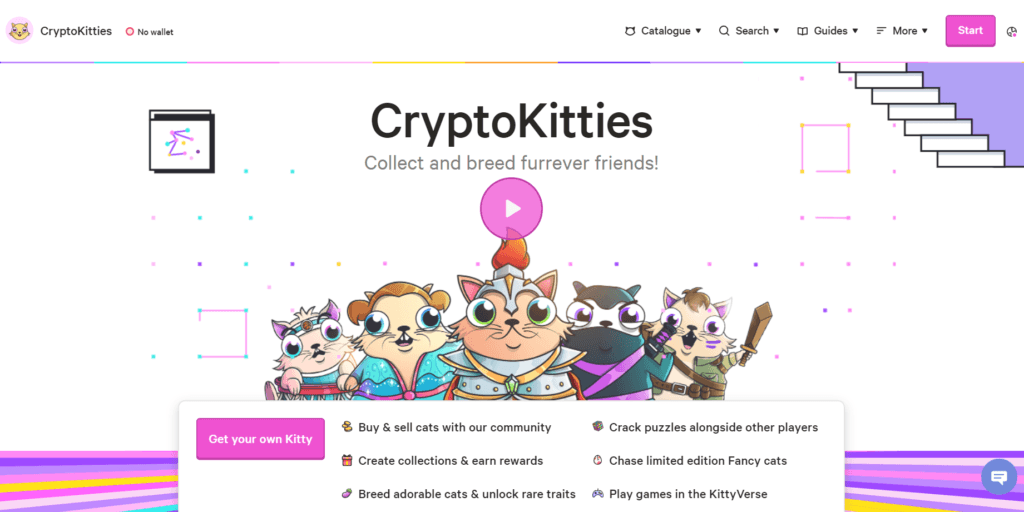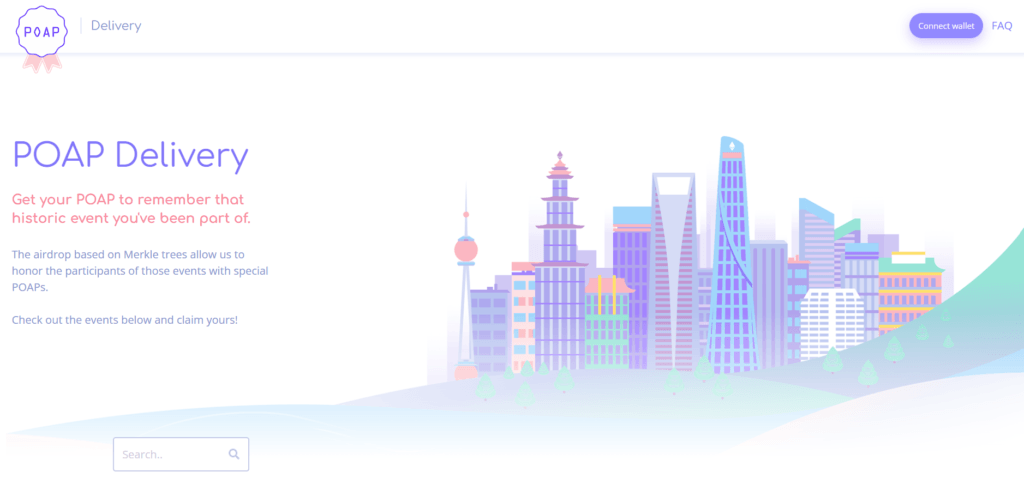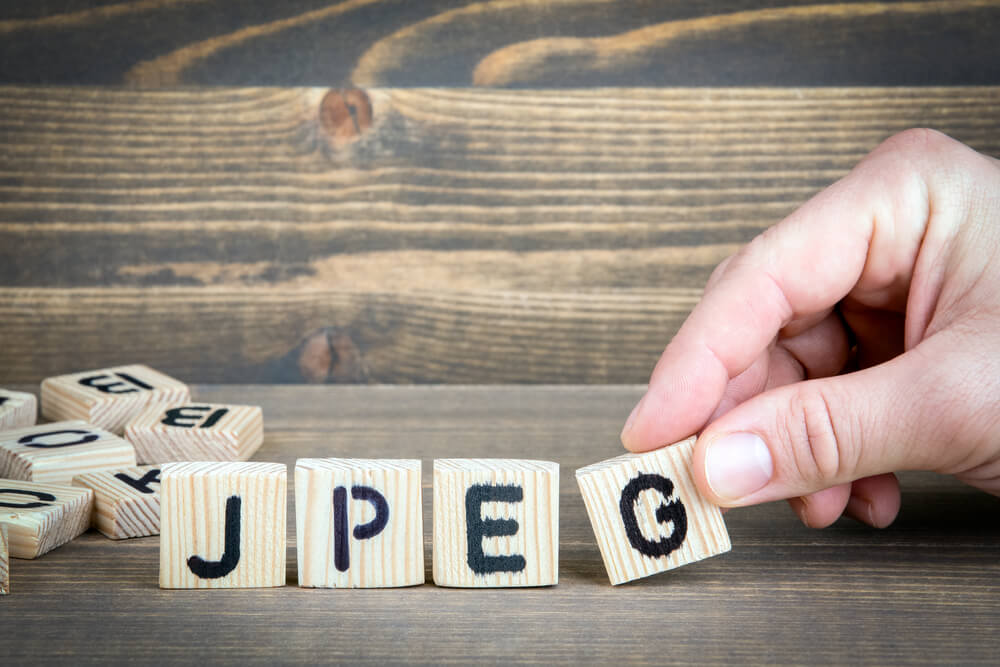Discover the answer to a common question many have: is an NFT a JPEG? Here, we also explain misconceptions surrounding NFTs and images.
If you haven’t heard of Non-fungible Tokens, then you might have been living under a rock (probably a large one). Developers are using them to explore ways to play with decentralized applications (DApps) in the blockchain space.
NFTs are the new buzzword in the crypto space. And you’re probably wondering if they are just a different name for something already well known — like an encrypted JPEG file. Well, an NFT is not a JPEG — it’s a cryptographically unique token, just like Bitcoin or Ethereum. It comes tethered to a piece of media, granting you official, absolute ownership of that media.
Read on to learn more about NFTs and understand why people are paying millions to obtain a piece of digital art instead of just downloading them for free as a JPEG.
Table of Contents
NFT Formats
NFTs are non-fungible tokens that are stored on the blockchain. They represent a unique asset and can be used to represent any type of asset. The most common use is as digital collectibles.
There are many file formats that NFTs can be stored as, including JPEG, PNG, and SVG. While JPEG and PNG files can store static images, SVG files are vector graphics and can be animated.
NFTs can either be stored on-chain or off-chain. When they are stored off-chain, the file itself is not stored on the blockchain—only a reference to it is. This allows for more data to be stored in the NFT than would otherwise be possible.
When an NFT is stored on-chain, it’s stored directly on the blockchain. Onchain storage needs to be paid for in cryptocurrency, but off-chain storage does not.
Types of NFT And What They Do
There are no rules as to what can count for an NFT. It is safe to say anything can be used as NFT, and this isn’t altogether false.
NFTs are used for a diverse range of applications and use cases. The highly flexible nature of NFTs can be attributed to the increasing number of teams and organizations developing them.
This implies that types of NFTs cannot be exhaustive, and there are possibilities for new NFTs in the future. Below are some popular examples today, delivering on various NFT use cases.
1. Collectible Items/Trading Cards

Collectibles are the first types and use cases of NFTs to emerge around 2017. They became famous with Cryptokitties, a digital kittens collector.
Today, there are different types of collectibles and trading cards listed by various companies. Like with real-life trading, collectibles and trading cards are valued based on their utility, rarity, and certification. Collectors buy either to show off or for investment purposes.
Read our guide to collectibles and memorabilia.
2. Generative Artwork
About 99% of all programmable arts NFT are artworks. Artists were among the first people that bought into the idea of NFT and capitalized on it, and artists like Takashi Murakami have built a fortune and a name from it.
NFT artworks today include GIFs, digital pics, videos, etc. These digital assets are sold online as would a physical item. They also fall among the most expensive types of NFT that sometimes sell for hundreds and millions of dollars.
Generative art NFT is an example of an artwork NFT. It is a collection of NFTs made up of several unique digital artworks designed either by an artist or a group of artists working together.
Read our guide to the best generative artists.
3. Event Tickets

Event organizers can use NFTs to verify the identity of those in attendance. They can do this by minting a fixed number of NFT tickets on a chosen blockchain. They can then proceed to sell these tickets at auction listings. Buyers can purchase and store them in the wallets on their phones. These NFT tickets can be used for music concerts or festivals.
An example of this type of NFT is the PAOP NFT.
Pronounced poh-ap, PAOP stands for Proof of Attendance Protocol. They are badges that help to verify if someone was in attendance at an event or not. The location of the event, whether physical or virtual does not count. A user can only get the NFT if they attend the event.
4. Music and Media
Converting media files and music to NFTs is becoming very popular today, and artists are jumping on this headlong.
Music has always been fungible, and this has been a bad market for artists as they struggle with censorship and record label issues.
Now with NFT, they can have full irreplaceable rights to their songs. This means they can have direct reach to a wider audience, and get to keep 100% of their earnings.
5. Gaming NFT
Gaming NFTs are commonly used as collectible assets in video games where players purchase items and keep track of them using their own NFTs. The NFT acts as a certificate of ownership for whatever it is attached to, and it can be swapped with other players or traded at an agreed-upon price.
Read our guide to NFT games.
6. Membership NFT
Membership NFTs are not very different from other NFTs, except they grant you access to a specific community. They can be used as an entrance ticket to that community or display your rank in the community. Usually, these are private Discord channels. Examples include Proof, Bored Ape Yacht Club and Cyberkongz.
Frequently Asked Questions
Is NFT JPEG or PNG?
An NFT isn’t the same as a JPEG or PNG. With an NFT, you will own a picture rather than merely downloading it from the internet. Anyone might still download it because it’s likely stored decentralized on IPFS, but you’ll be the one who owns it.
Why Do People Purchase NFTs?
Purchasing NFT art is fun for collectors. It also allows them to support artists you love financially. That said, buyers also pick up NFTs to flip for a profit.
When you buy an NFT, you usually get some usage rights, such as the ability to publish the image online or make it your profile photo.

